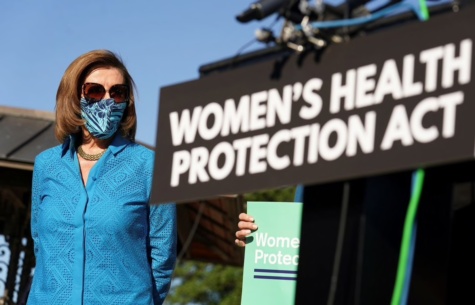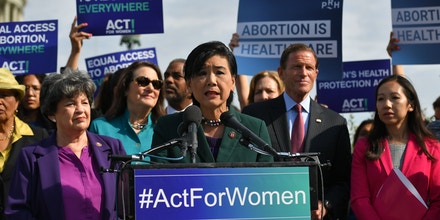
Brooklyn Staab | Student Life Editor & Publicity Manager
October 1, 2021
Women’s rights and body autonomy have been recently tested with new state laws, such as the Texas abortion ban.
In lighter news, The Women’s Health Protection Act of 2021 (WHPA) recently just passed congress, and although it has a long way to go before becoming an official federal law, this act gives some hope to regaining body autonomy for women.
The bill has been introduced and passed by Congress, but still has to be passed by the Senate, then the President in order for it to become an official law. However, the Senate is currently evenly divided between republicans and democrats, and ten Republican Senators would have to vote yes on the bill, which seems unlikely as of right now.
“I support this bill because it could ensure women’s safety,” senior Kaitlyn Northrup said.

Introduced in June of 2021 by California’s own Judy Cho, the WHPA would protect the right to access abortions throughout the United States. This act would simply re-affirm Roe vs Wade, a famous supreme court decision that has been continually undermined by states such as Texas. Roe vs Wade states that women have the right to an abortion without excessive government restrictions, yet “heartbeat bills,” which restrict abortions, exist in states such as Ohio, Georgia, Louisiana, Missouri, Alabama, Kentucky, South Carolina, and Texas.
While California residents enjoy the right to obtain an abortion, “nearly 500 state laws [in other areas across the US] restricting abortion have been enacted since 2011, and clinics providing care have been forced to close,” according to the WHPA official website. The website adds that “today, nearly 90 percent of American counties are without a single abortion provider and five states are down to their last abortion clinic.”
“Women should be able to make a decision about their body without the interference of the government,” senior Ava Hazzard-Johnson said. “I think it is wrong that people feel they are able to control someone’s body in this way.”
In addition to allowing women greater access to abortion across the country, it would allow them more time to decide on an abortion in many areas. Six weeks–the amount of time it takes for a fetus to potentially develop a heartbeat, which would prevent a woman from having an abortion in some states–is an awfully short amount of time to even figure out that one is pregnant, let alone decide whether or not one can emotionally, physically, and financially support having a child, especially if the pregnancy occurred from a non-consensual act.
Menstrual cycles, on average, are four weeks. Being one week late, however, is not an out-of-the-ordinary experience for most women. Additionally, there is the fact that most women don’t start showing that they are pregnant until their second trimester or later. Therefore, a women might first realize that she is pregnant only days before the abortion cutoff and have to make potentially one of the most difficult decisions of her life in this brief period of time. Having less than six weeks to even discover a pregnancy is unrealistic, and for women to be fully protected, the US must uniformly grant abortion access under more reasonable restrictions.

Leave a Reply